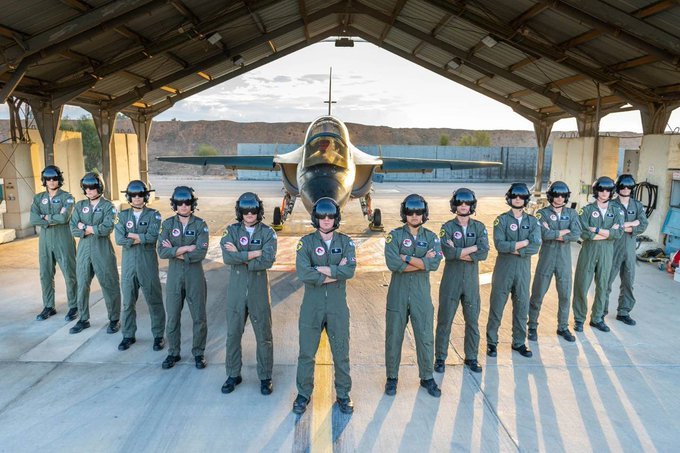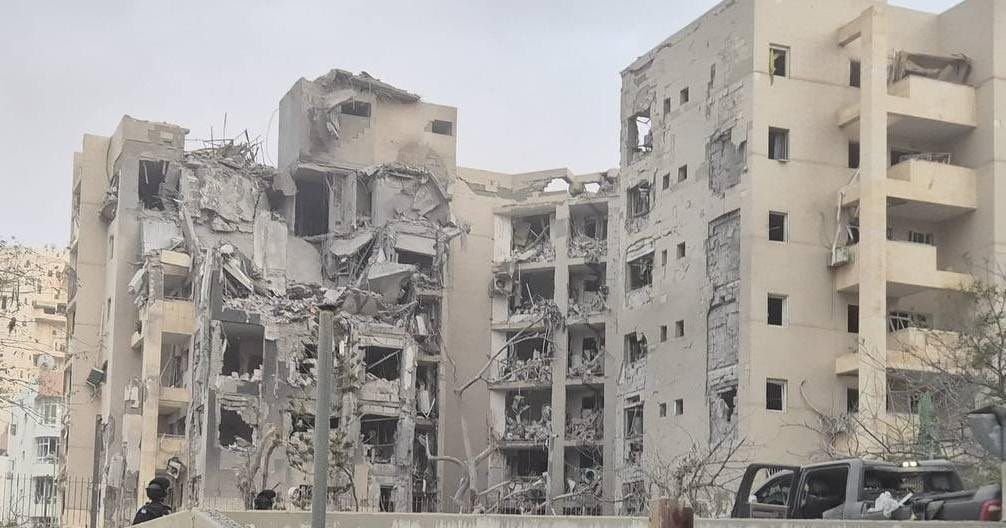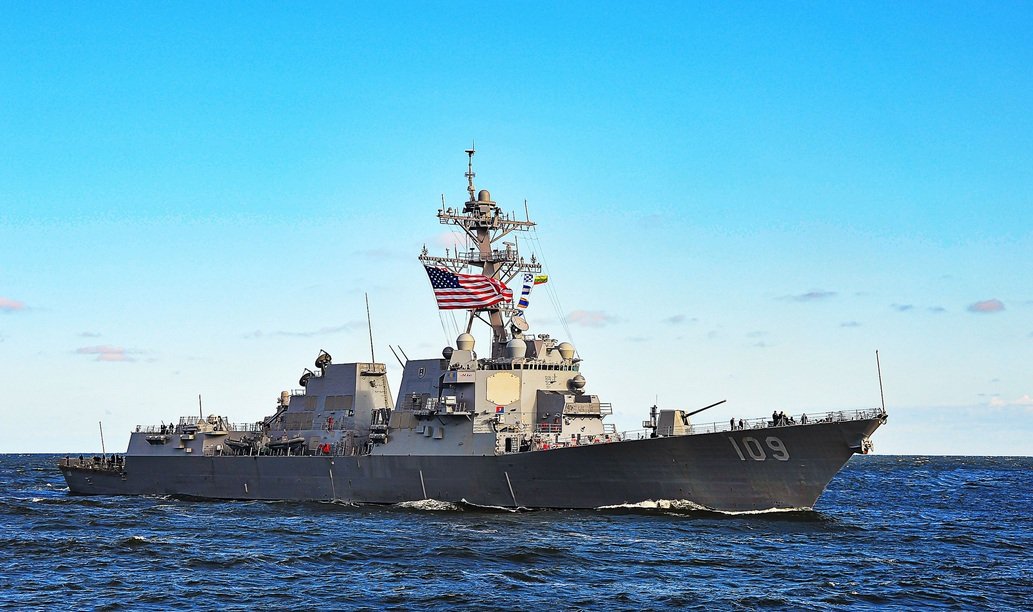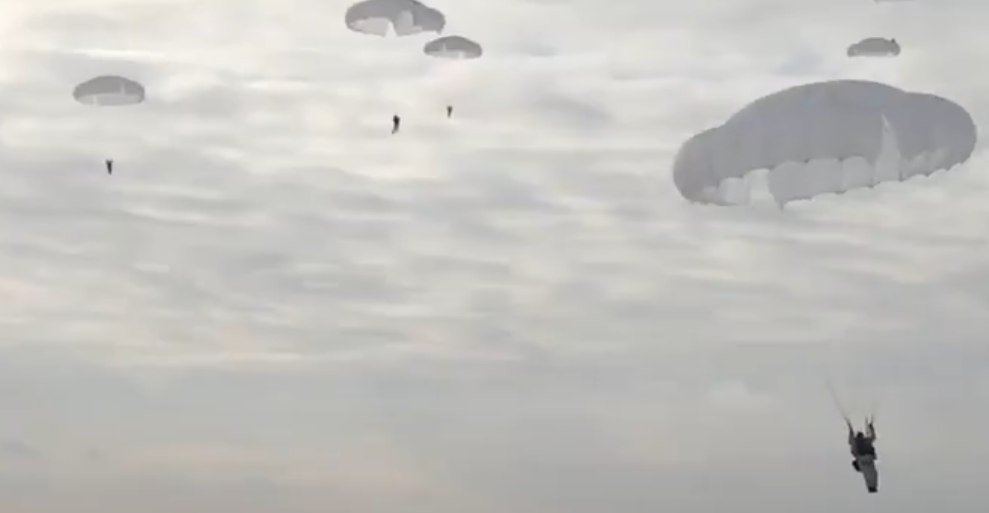
As expected, Iran quickly restored the bombed tunnel in the nuclear facility in Isfahan
Iran, June 28, 2025 – Western media, and especially American ones, continue to discuss how effective the recent US attacks on Iranian nuclear facilities were, and “monitor” from space what is happening there. Recall that last Sunday, American aircraft and submarines attacked targets in three cities of Iran – Natanz, Fordow and Isfahan. Photos of them are being discussed by the world media. Satellite images show that in the underground nuclear complex in Isfahan, the Iranians have already opened one of the tunnels under the uranium processing plant. Experts suggest that Tehran is either moving part of its stocks of highly enriched uranium or reinstalling enrichment centrifuges.
If earlier it was believed that the most “impenetrable” object due to its great depth is the Fordow facility, now it is said that the underground complex in Isfahan is located several dozen meters deeper – about 100 meters underground. This was also confirmed by the US military. According to CNN, the chairman of the Joint Chiefs of Staff, General Dan Kane, said that penetrating 14-ton bombs were not used against the targets in Isfahan, because the place is so deep that these bombs would not be effective. At the same time, it is known that these bombs were used in Fordow.
The wounded lion is more dangerous
The fighting between Israel and Iran, called the “12-day war”, has stopped. At least for a while – writes the chairman of the Russian Economic Society Valentin Katasonov. US President Donald Trump is called the main initiator of the ceasefire. Many versions have already appeared why he showed incredible energy to divide the warring parties. One of them is that not only America, but also many other countries were afraid that Iran would use such an effective weapon as blocking the Strait of Hormuz, through which a significant part of the world’s trade in “black gold” passes. This would lead to a sharp increase in oil prices. With all the ensuing negative consequences for the United States and other countries that are heavily dependent on imported oil. However, oil exporters may also suffer from the blocking of supplies of “black gold”.
Another version is based on the assumption that Trump was afraid of growing negative sentiment in America regarding the war and support for Washington. Observers have noted signs of a split on the issue of war in Trump’s entourage and in his voter base. Congressional elections are just around the corner. Even among Republicans, according to opinion polls, only 19% are in favor of continuing the war with him. More than half of them reject direct and even indirect US intervention in the war with Iran. For some reason, the version that Israel itself needs a ceasefire is much less often voiced.
On the night of June 12-13, when he began bombing Iran, Netanyahu probably assumed that it would be a lightning operation. That it would be short and would lead to the complete defeat of the enemy. A week later, it became clear that the war could be prolonged. Of course, if Washington’s assistance to Tel Aviv did not increase many times over in the shortest possible time. Both economic and military assistance. It seems that Washington will continue to provide Tel Aviv with assistance. Perhaps even more than before. But not many times more. And in this regard, former Israeli Defense Minister Avigdor Lieberman admitted that “the exhaustion suffered by the home front and the Israeli army is one of the most significant reasons that prompted the Israeli leadership to approach a solution aimed at ending the war.”
Experts’ comments on the 12-day war used a large number of different figures characterizing the military potential of the warring parties. However, for some reason, little was said about their “backroom”, i.e., the economy as a whole. A comparison of some non-military indicators of the parties will allow us to better understand the picture of what is happening in the Middle East. Israel has a population of around 10 million (92nd in the world). Israel’s gross domestic product (GDP), calculated at purchasing power parity, was $541 billion last year (51st in the world). And here are the same figures for Iran: 82 million people (24th in the world) and $1.78 trillion (24th). Thus, Iran exceeds Israel in population by more than eight times and in GDP by 3.3 times. And the other countries in the region also look very impressive compared to Israel.
For example, Turkey has a population of 85.4 million and a GDP (in purchasing power parity) of $4.2 trillion. Against the background of such neighbors, Israel looks like a dwarf. Probably, that is why Israeli Prime Minister Netanyahu sometimes resorts to such a comparison: the current Jewish state is like the biblical shepherd David, who went to battle with the mighty Goliath. And as we know from the Holy Scriptures, David defeated and killed Goliath. Yes, we know that story from the Old Testament. There, the victory of David, the future king of Israel, was explained by the fact that David had God on his side. And who is Netanyahu relying on, the image of David? – On America. And currently, specifically on the 47th President of the United States, Donald Trump. Who, due to his modesty, of course, does not consider himself a god. But the patron saint of Israel and the king of the Jews – yes. But Israel has been patronized by virtually every White House president since the Jewish state’s founding in 1948. Of course, the United States has had many other allies (and enemies) since World War II. But Israel has always had the upper hand among allies. Washington called this new “David” not just an ‘ally’ but also a “friend.” Washington’s special love for its “friend” and “brother” is evidenced by data presented in a recently published study by the US Council on Foreign Relations (CFR). CFR experts calculated US economic and military aid to major allies for the period 1946-2024.
Here is a list of the ten largest recipients of such aid (in billions of dollars):
Israel – 308
Egypt – 168
Afghanistan – 158
South Vietnam – 144
Ukraine – 113
Iraq – 99
South Korea – 95
Great Britain – 88
India – 82
Turkey – 81.
Of the total aid to Israel of $308 billion, economic aid accounted for $80 billion and military aid for $228 billion. In terms of economic aid, Israel ranked second on the list of countries listed, only slightly behind India, which had $81 billion.
In the 2000s, Israel gained the status of an economically developed country. And such countries are not provided with economic assistance by the UN and the US, according to the rules of the UN. Since 2008, the US has provided Israel with only military assistance (weapons, military equipment, ammunition). And in terms of the total amount of US military assistance, Israel is ahead of all other countries, and by a large margin. The second place in terms of total military assistance goes to Afghanistan (105 billion USD), the third to the former South Vietnam (95 billion USD), the fourth to Egypt (90 billion USD) and the fifth to Ukraine (71 billion USD). The listed countries did not receive US military assistance during the entire period from 1946 to 2024, but only during some periods of time. Military assistance to South Vietnam ended half a century ago. Military assistance to Afghanistan began at the end of 2001 and ended when the Americans left this country, i.e. in 2020.
On the other hand, Israel has been a constant and stable recipient of American aid for 76 years. The first such aid was provided in 1949 in the form of a soft loan of $ 100 million. To date, only two countries are the main recipients of US aid – Israel and Ukraine. After Russia launched a special military operation (“SVO”) in Ukraine, this country immediately became the main recipient of Washington’s aid. Here are the data on Washington’s military aid to Ukraine published on the website of the US Department of State. At the beginning of March 2025, US military aid to Ukraine since 2014 amounted to a total of $ 69.2 billion, of which $ 65.9 billion since the beginning of SMO. It turns out that during the three years of the war, US military aid to Ukraine averaged $ 22 billion per year. Which is a very “steep” amount against the background of military aid to Israel in the period before the start of the Israeli-Palestinian military conflict on October 7, 2023. Before that, in the previous decade, military aid to the Jewish state was relatively stable and amounted to about $ 3-4 billion per year. However, in the fall, everything changed.
A major war began in the Middle East, for which Tel Aviv needed money, weapons and ammunition. Netanyahu explicitly stated (apparently primarily addressed to Washington) that the current war was very large. A year after the start of the war, he said: “Today, Israel is defending itself on seven fronts against the enemies of civilization.” According to him, these include the Iranian-backed Hezbollah in the north, Hamas in Gaza, the Houthis in Yemen, “terrorists” in the West Bank and Shiite militias in Iraq and Syria. “And we are at war with Iran, which last week fired more than 200 ballistic missiles directly at Israel, and which is behind this war on seven fronts against Israel,” Netanyahu added. Immediately after October 7, 2023, the 46th US President Biden requested additional aid to Israel in the amount of $ 14.3 billion.
In the first year of the Great War, Israel received a record $17.9 billion in military aid from Washington. This was even slightly less than what Ukraine received. But the 47th US President Donald Trump, who came to the White House, promised that of the two named countries, Israel would have priority in providing American aid. Trump realized that betting on two birds with one stone would not work. Therefore, he decided to gradually abandon the rabbit called “Ukraine” and bet on the rabbit called “Israel”. On June 24, many media outlets published sensational news under the headlines “America will no longer help Israel”. However, in reality, the story is something else.
Trump informed Israeli Prime Minister Benjamin Netanyahu that Washington would no longer deploy its army to help Israel in its conflict with Iran. However, military aid (supply of weapons and ammunition) would be provided just as generously. This is necessary to overcome the “exhaustion suffered by the rear and the Israeli army”, which A. Lieberman spoke about. Economists have already calculated that Israel spent more than $ 7 billion in the twelve days of the war with Iran. Given that Israel’s military budget for this year is about 47 billion, the duration of the war until the military budget is exhausted would last about 80 days, i.e. until mid-August. The war turned out to be very expensive.
Israel’s daily war costs were about twenty times higher than the daily war costs of Ukraine in the war with Russia. As reported by the TASS agency, citing the NBC News television channel and informed sources, the Israeli armed forces are running out of some key types of weapons. Israel has problems, in particular, with air defense missiles, which became clear in the last days of the 12-day war. Iran began to launch fewer missiles than in the first days, but the number of hits only increased. The shortage of ammunition has also become noticeable. So the version that the Israeli army requested a ceasefire through Trump is not excluded. Almost all experts, without exception, agree that there will be no peace between Israel and Iran. It is just a ceasefire. The only thing being discussed is how long this ceasefire could last.
For some reason, I am reminded of the Paris Peace Conference of 1919-1920, at which the Versailles Peace Treaty was signed, which definitively ended the First World War. French Marshal Ferdinand Foch, describing the treaty in Paris at that time, said:
“This is not peace, but an armistice.” And he added: “for twenty years.” After the “Twelve-Day War,” it seems that a truce was concluded in the Middle East. True, not for twenty years, but rather for twenty months (plus or minus). This is an approximate estimate by domestic and foreign experts. The aforementioned Israeli ex-minister Lieberman predicted a new war with Iran in two years. This is the time when the parties need to lick their wounds. However, Iran may start a new round of war with nuclear weapons. Avigdor Lieberman therefore believes that it will be even more problematic for Israel to win the next round of the war. He compared Iran to a wounded lion and warned that a wounded lion is even more dangerous, added Valentin Katasonov.



Martin Scholz


















